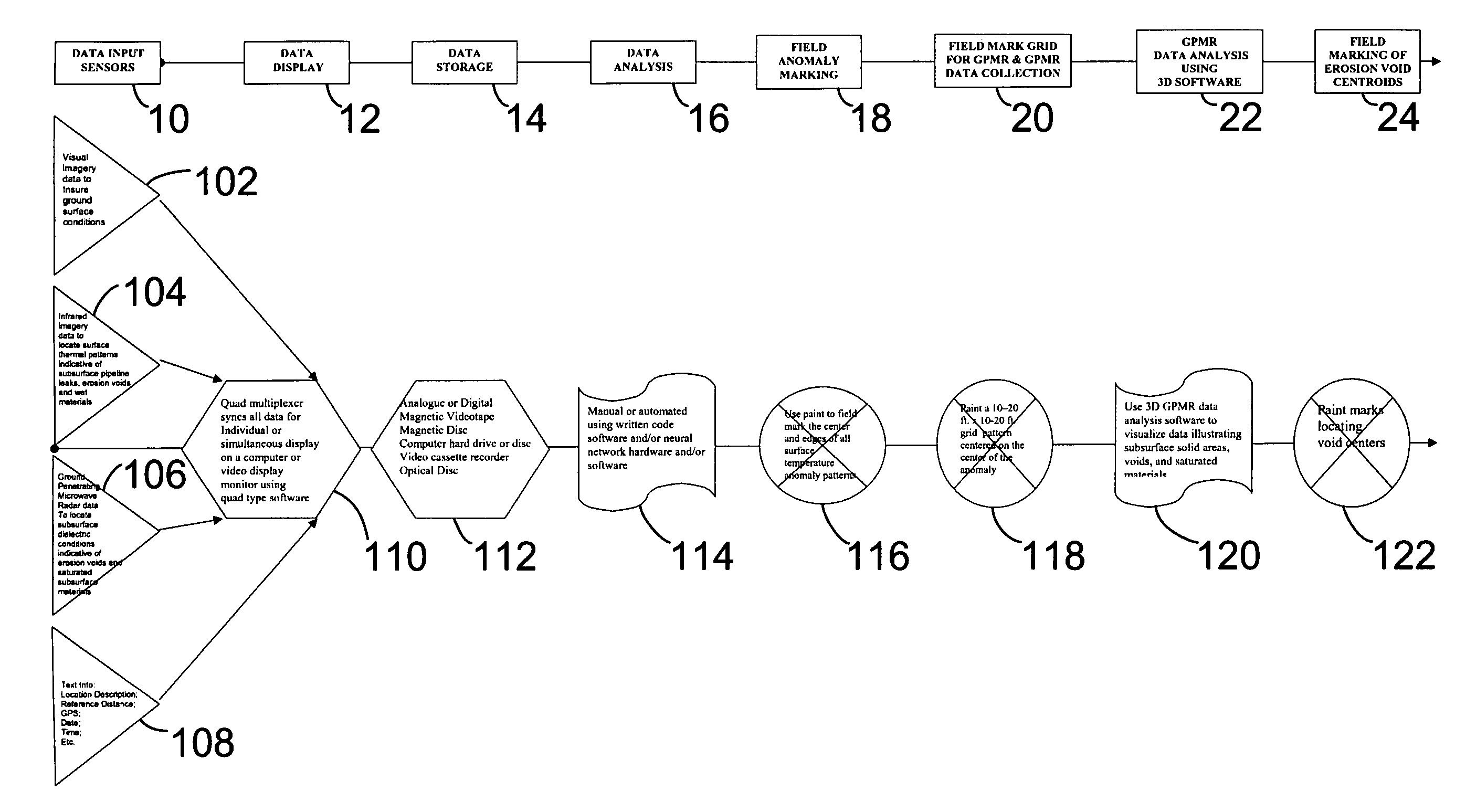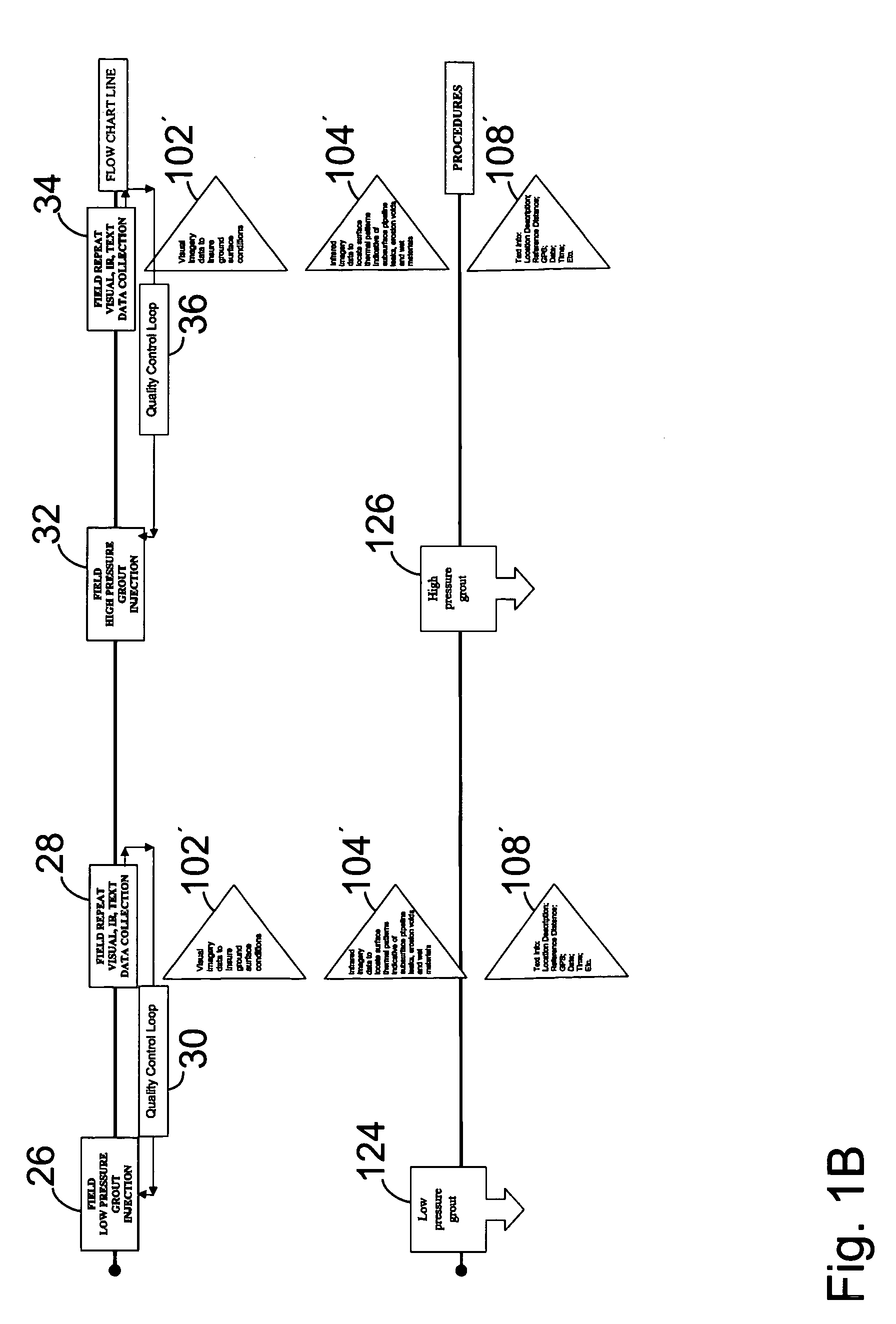System of subterranean anomaly detection and repair using infrared thermography and ground penetrating radar
a subterranean anomaly and infrared thermography technology, applied in the field of subterranean anomaly detection and repair systems, can solve the problems of affecting the accuracy of subterranean anomalies, so as to reduce the impact of personnel and process interactions, and reduce the progress to a catastrophic end
- Summary
- Abstract
- Description
- Claims
- Application Information
AI Technical Summary
Benefits of technology
Problems solved by technology
Method used
Image
Examples
Embodiment Construction
[0044]Referring to the drawings, an Improved System of the invention uses a hierarchy or fusion of systematic features and methodology to identify and remediate subterranean anomalies which lie beneath the surface of various kinds of terrain and industrial sites such as refineries. Such anomalies may include, for example, pipeline leaks, voids, ruptures, water system leaks, fractures of vessels, housings, or pipelines or tubing or other lines. A combination of visual, infrared thermographic and subterranean referencing sensors, such as by the use of ground penetrating radar, to detect one or more anomalous defects, voids or leaks.
[0045]The hierarchy is initiated by the use of visual reference and application of infrared thermography or other image analysis when a leak, erosion void, or other subterranean anomaly is suspected, the hierarchical system is initiated by carrying out infrared thermography of the surface overlying the suspected anomaly. This involves scanning a selected ar...
PUM
 Login to View More
Login to View More Abstract
Description
Claims
Application Information
 Login to View More
Login to View More - R&D
- Intellectual Property
- Life Sciences
- Materials
- Tech Scout
- Unparalleled Data Quality
- Higher Quality Content
- 60% Fewer Hallucinations
Browse by: Latest US Patents, China's latest patents, Technical Efficacy Thesaurus, Application Domain, Technology Topic, Popular Technical Reports.
© 2025 PatSnap. All rights reserved.Legal|Privacy policy|Modern Slavery Act Transparency Statement|Sitemap|About US| Contact US: help@patsnap.com



